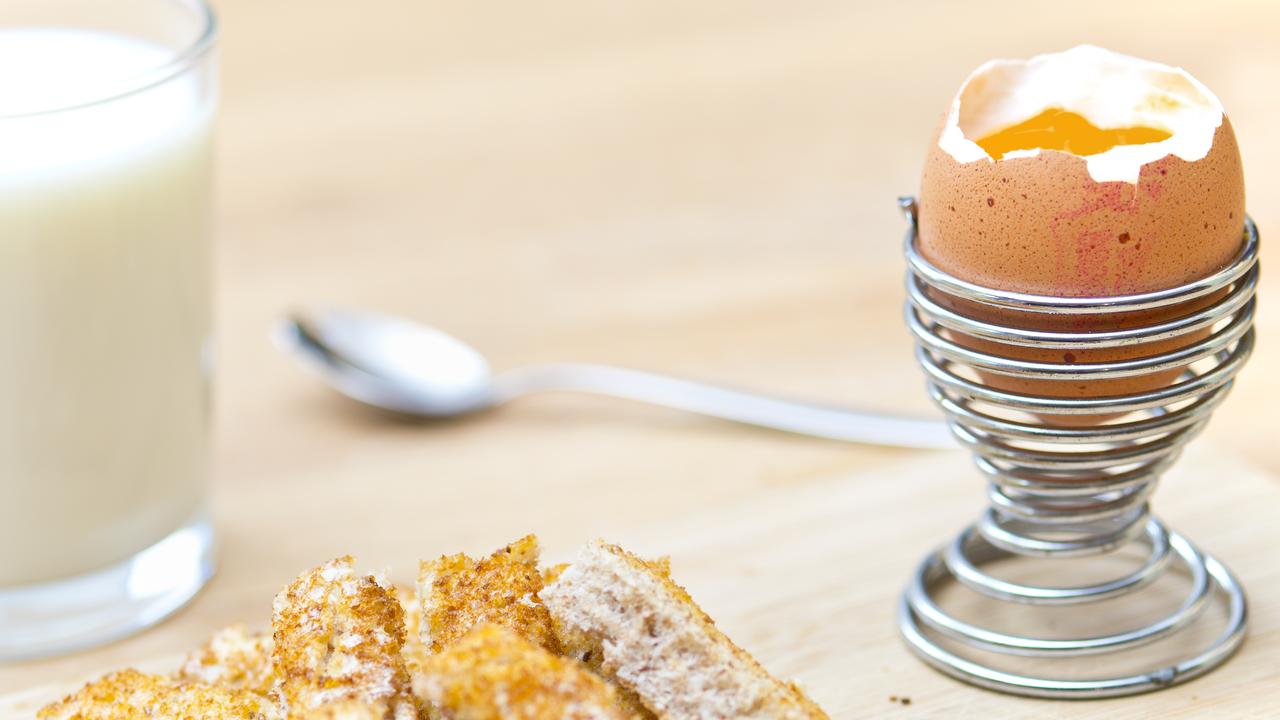Ten days for Britain to pay its respects to Queen Elizabeth II
Years of planning and centuries of tradition will be drawn upon as Queen Elizabeth II is laid to rest.
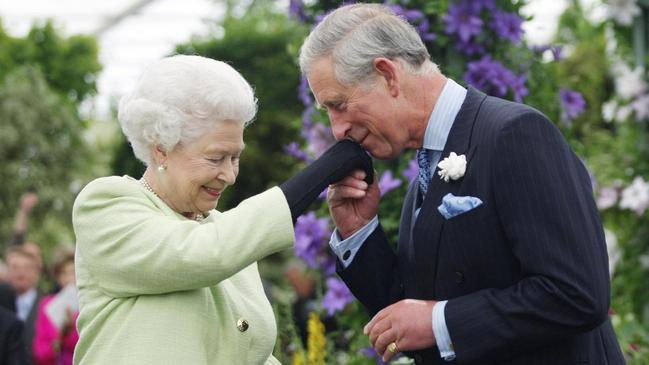
Everything that happens over the next 10 days, from the posting of the announcement of the Queen’s death on the railings of Buckingham Palace to her interment in St George’s Chapel, has been planned for decades.
Each detail, whether it is the route her coffin will take or the hymns that will be sung at her funeral, has been minutely scrutinised. At the same time, though, there is an element of unpredictability. What form will the public’s grief take? How big will the crowds be? And how will the royal family react?
All timings are subject to change, and the day of the funeral has not been confirmed.
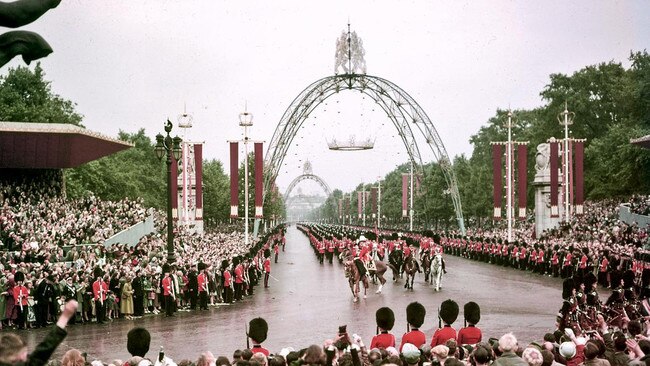
TODAY
The King and Queen Consort return to London from Balmoral. He is expected to have his first audience with prime minister Liz Truss at Buckingham Palace as soon as possible, possibly in the afternoon. He will also meet the Earl Marshal, a post held by the 18th Duke of Norfolk, who is in charge of funeral arrangements, and sign off the plans.
At about 6pm he will give a recorded televised address. Although the proclamation declaring him to be King will not be made until tomorrow (Saturday), and the Coronation will not happen until some months hence, the crucial point is that he is already the king: that happened the moment his mother died.
At midday the Sebastopol Bell at the Round Tower at Windsor Castle will toll, once a minute for every year of the Queen’s life: it is struck to mark the death of the sovereign, and was last heard for the arrival of the Queen Mother’s coffin at Windsor Castle in 2002.
A royal salute will be fired in Hyde Park by the King’s Troop Royal Horse Artillery and at all Saluting Stations at home and abroad. One round for each year of the Queen’s life. The royal household will be in “royal mourning” for a month. Flags will be at half-mast, palaces closed to the public and all royal public engagements cancelled.
The government will confirm the length of national mourning, which is likely to be 12 to 13 days up to the day after the Queen’s funeral. The prime minister will attend a service of remembrance at St Paul’s in central London.

SATURDAY, SEPTEMBER 10
This is the day Charles is formally proclaimed king. The accession council, the body that confirms him as sovereign, meets in the picture gallery of St James’s Palace at 10am – initially without him, although he enters the room once his accession has been confirmed.
The council is made up of members of the privy council, the formal body of advisers to the sovereign, as well as great officers of state, the lord mayor of London, the high commissioners from the 14 other realms where the monarch is sovereign, and senior civil servants.
There are about 670 privy counsellors, mainly parliamentarians but also senior judges, archbishops and Commonwealth leaders. In theory all are invited but they would not all fit in. The Queen Consort and Duke of Cornwall and Cambridge are members, but it is not known if they will attend.
When the meeting begins, the lord president of the council announces the death of the sovereign and calls upon the clerk of the council to read aloud the text of the accession proclamation. The words are enshrined in precedent: only the names change. “Whereas it has pleased Almighty God to call to His Mercy our late Sovereign Lady Queen Elizabeth the Second of Blessed and Glorious memory, by whose decease the Crown is solely and rightfully come to the High and Mighty Prince Charles Philip Arthur George …”
The platform party (comprising any of the royal family present who are privy counsellors, the Archbishop of Canterbury, the lord chancellor, the Archbishop of York, the prime minister, the lord privy seal, the lord great chamberlain and the Earl Marshal, together with the lord president) then sign the proclamation. After the accession council has concluded that Charles is the just and rightful heir, he is invited in to its second part, which is in effect his first privy council meeting. It is attended by UK privy counsellors only.
When the new sovereign enters the room, his first act is to make a personal declaration relating to the death of the sovereign. His next act is to take an oath relating to the security of the Church of Scotland, which dates to the Act of Union of 1707 and has been taken by every sovereign since George I in 1714.
The oath reads: “I, by the Grace of God of the United Kingdom of Great Britain and Northern Ireland and of My other Realms and Territories King, Defender of the Faith, do faithfully promise and swear that I shall inviolably maintain and preserve the Settlement of the true Protestant Religion as established by the Laws made in Scotland in prosecution of the Claim of Right and particularly by an Act intituled ‘An Act for securing the Protestant Religion and Presbyterian Church Government’ and by the Acts passed in the parliament of both Kingdoms for Union of the two Kingdoms, together with the Government, Worship, Discipline, Rights and Privileges of the Church of Scotland. So help me God.”
At 11am three trumpeters from the Life Guards will step out to announce with a fanfare the proclamation, which is read from the balcony above Friary Court, St James’s Palace, by garter king of arms, the realm’s most senior herald, accompanied by the earl marshal.
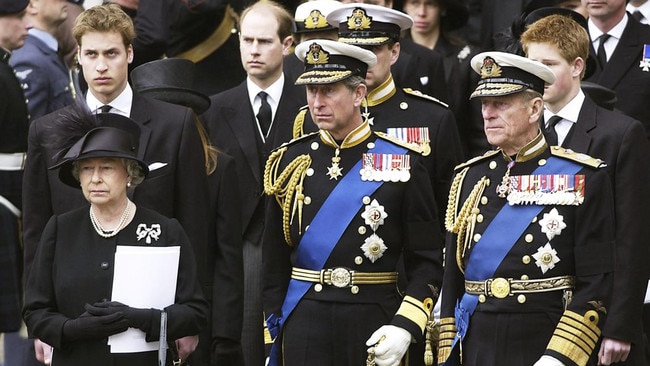
As the proclamation is read out, a 41-gun salute is fired by The King’s Troop Royal Horse Artillery in Hyde Park.
At noon, there is another proclamation in the City of London, and a 62-gun salute by the Honourable Artillery Company at the Tower of London.
Afterwards the King will meet the realm high commissioners. During the rest of the day he will have further meetings with the prime minister and the cabinet, the Archbishop of Canterbury and the Dean of Westminster.
Books of condolence will be opened at St James’s Palace, the Queen’s Gallery (next to Buckingham Palace), Windsor Castle, the Palace of Holyroodhouse, Balmoral, and Sandringham. Ambassadors based in London, and visiting dignitaries and heads of state, will be able to sign a book of condolence at Lancaster House.
Westminster Hall will be cleaned and its stone floor covered with 1,500m of carpet. The processional routes between Buckingham Palace, Westminster and the abbey will be made ready. Pallbearers will practise carrying a lead-lined coffin. The actual coffin, covered with the royal standard of Scotland, will stay at Balmoral Castle to give staff a chance to pay their respects.
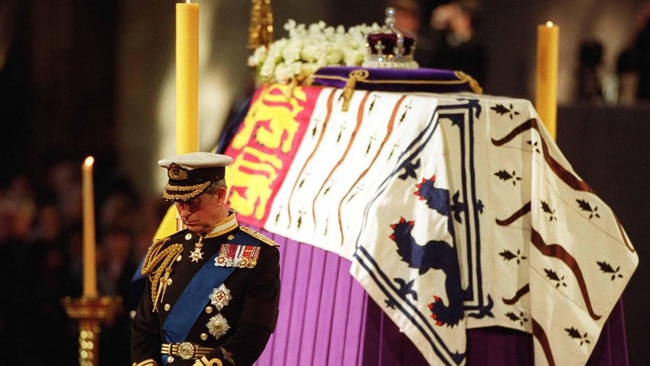
SUNDAY, SEPTEMBER 11
King Charles, who succeeds his mother as head of the Commonwealth, is expected to have an audience with its secretary-general. There is also a reception for the high commissioners of the Commonwealth realms, those countries outside the UK of which the king is head of state. The Queen’s coffin is expected to be taken by road to the Palace of Holyroodhouse in Edinburgh, where it will lie at rest in the throne room. Proclamations will be read in the Scottish, Welsh and Northern Ireland devolved parliaments.
MONDAY, SEPTEMBER 12
The coffin is expected to be taken in procession along Royal Mile to St Giles’ Cathedral. A service will be held in St Giles’ and the Queen’s children are expected to stage a vigil around the Queen’s coffin – the Vigil of the Princes. Members of the public are expected to be allowed in to file past the Queen’s coffin to pay their respects.
The Houses of Commons and Lords are to come together in Westminster for a Motion of Condolence.
Over the coming days King Charles will travel to all nations of the UK, in what is known as Operation Spring Tide. His first significant trip outside London is expected to be to Scotland. His arrival in Edinburgh at the Palace of Holyroodhouse is marked by the ceremony of the keys, in which the lord provost of Edinburgh hands the sovereign the keys of the city. The lord provost is an ancient office dating to the 13th century: the holder is elected every four years from members of the city council.
The king then joins a coffin procession to St Giles’ Cathedral, where there is a service to mark the arrival of the coffin and the start of the public lying at rest. The day’s events are also likely to include an audience with the first minister, a motion of condolence and a reception at the Scottish parliament.
His visit to Northern Ireland may take a different form. At Hillsborough Castle he would normally meet the first minister, but with no devolved government in place those posts are vacant. There may also be a service at St Anne’s Cathedral, Belfast.
TUESDAY, SEPTEMBER 13
The coffin is to be flown to London, where it is likely to be at rest in the Throne Room. The procession from Buckingham Palace to the Palace of Westminster will be rehearsed.
WEDNESDAY, SEPTEMBER 14
Draped with the royal standard and topped with the imperial state crown, it will be taken to the Palace of Westminster for the lying in state, five days in which the public can pay their respects. The crown was worn by the Queen when she returned from Westminster Abbey after the Coronation, and the state opening of parliament each year until 2016.
The coffin is borne on a gun carriage by the King’s Troop Royal Horse Artillery to Westminster Hall via The Mall, Horse Guards and Whitehall. Big Ben will toll, and members of the royal family are expected to follow the coffin.

About a week after the Queen’s death, King Charles will travel to Cardiff, where a service is held at Llandaff Cathedral. He will receive a message of condolence at the Senedd, the building of the national assembly, and at Cardiff Castle. About this time in Westminster Hall there might be an evening vigil mounted around the coffin by the Queen’s children.
In the days before the funeral King Charles will have meetings, including with senior defence staff, the commissioner of the Metropolitan Police, the governors-general and the realm prime ministers. In the evening, there is a reception for foreign royal families at Buckingham Palace. He is also expected to have another audience with the prime minister. In the evening before the funeral there is likely to be a reception for heads of state, governors-general, realm prime ministers and other visiting official guests.
MONDAY, SEPTEMBER 19
On the day of the funeral Westminster Hall will close to the public in the morning. At about 10.30am a bearer party moves the coffin from the catafalque to the state gun carriage, which will be outside the north door of Westminster Hall. The royal family will follow the coffin to the great west door of Westminster Abbey.
The service, which is likely to be conducted by the Dean of Westminster, will start at 11am. At the end, Last Post and Reveille will be sounded by four state trumpeters, followed by the national anthem. A bearer party will carry the coffin back to the state gun carriage outside the west gate, from where it will be taken to Wellington Arch, Hyde Park Corner. After arriving at Wellington Arch it will be transferred to the state hearse. There will be a royal salute and the national anthem.
On arriving at Windsor the coffin will enter St George’s Chapel, where it will be taken to the catafalque.
The service of committal is expected to begin at 4pm. Before the final hymn the imperial state crown, the orb and the sceptre will be removed from the coffin by the crown jeweller. At the end of the service the coffin is lowered into the royal vault. There is a blessing by the Archbishop of Canterbury, and the singing of God Save The King.
In the evening members of the royal family will say their final farewells. They will arrive at the deanery, where the Dean will take them to the King George VI Memorial Chapel, which is within St George’s Chapel.
During the private burial service Charles is likely to scatter earth upon the coffin, as the Queen did at the funeral of her father. She will be laid to rest in the chapel alongside her father, her mother and her sister’s ashes.
The Times

